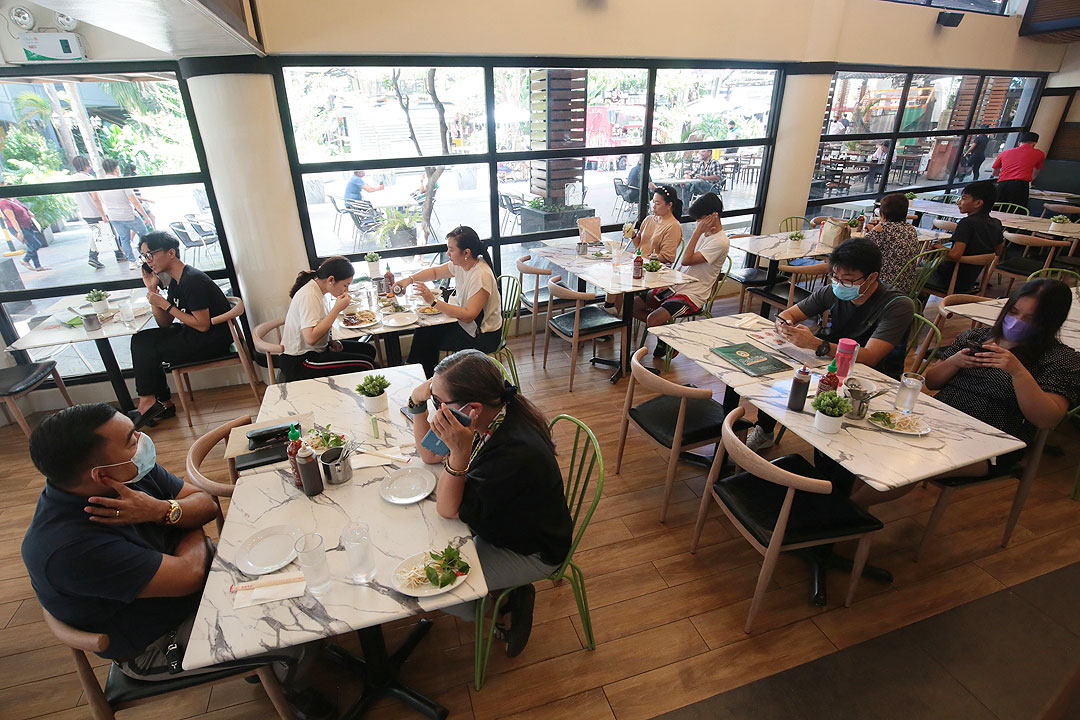Supply chain shortages weigh on PHL restaurants’ operations

By Revin Mikhael D. Ochave, Reporter
OPERATIONS of some local restaurants are being hampered by global supply chain disruptions, which have caused shortages of some food items and driven prices higher.
Eric Teng, president of the Restaurant Owners of the Philippines (RestoPH), said that food production here and abroad has been affected by supply chain disruptions worldwide.
“For example, there may be lower output in domestic rice production due to the lack of fertilizer today. The fertilizer, a lot of it also comes from Ukraine and Russia,” he said in a mobile phone reply to BusinessWorld questions.
Mr. Teng said some restaurant operators have seen costs double due to these supply chain problems.
“It is a very difficult and challenging situation now for a restaurant operator,” he added.
Some restaurants are also facing delays in the delivery of raw materials and produce used in their operations, Mr. Teng said, in addition to the surging fuel costs.
As a result, he said some restaurants have already increased prices, while others are still trying to absorb some of the rising costs.
“Inevitably, we have to pass on the price increase to the consumer. But restaurants don’t want to raise their prices too much because they don’t want to scare their guests,” Mr. Teng said.
“It depends on the restaurant operator if they still have a stockpile and they can absorb some of the rising costs. But it is unfair to assume that those restaurants can maintain their low selling price for a long time given the increased costs that they have to suffer right now,” he added.
For example, restaurant chain Mary Grace Café admitted there may be some difficulty in purchasing their signature ensaymada due to “supply issues” on some raw materials.
“Unfortunately, we’re experiencing some global supply issues on a few raw materials beyond our control. As we are committed to using only the best, high-quality ingredients, do know that we will never compromise on what goes into all our products and we’re hoping to resolve this issue soon,” Mary Grace Café said in a post on its Facebook page.
Newly opened donut chain Randy’s last week announced it was pausing operations as it awaits shipments of flour and other raw materials from the United States.
The Agriculture department last week said there was a global shortage of potatoes that are used for French fries, affecting the supply in some fastfood chains. Some fastfood chains have stopped selling large servings of French fries, and have offered other food items instead of fries.
RECOVERY ON TRACK
However, Mr. Teng said that the local restaurant industry can still manage, saying that some operators are trying to find solutions by offering alternative items on their menus.
“In some restaurants, if the cost increases are too much, they can just opt to not have that in the menu and serve other alternative items first that are locally grown or locally available,” he said.
With inflation rising to a three-year high in April, there are also concerns that consumers may cut back on restaurant spending.
“If customers typically order five or six items, right now they might order four or five items just so that if money or budget is an issue, they can always cut back on their purchases,” Mr. Teng said.
Trade Secretary Ramon M. Lopez said the government has been making efforts to link local producers and restaurants to encourage more local input and farm-to-table value chain models, even before the pandemic.
“We should continue to do more of these, also the consolidation of produce to link with institutional users like restaurants and direct-to-consumer apps through online platforms,” Mr. Lopez said. “Moreover, ensure that whatever local produce is insufficient, there are less non-tariff barriers and allow easier access to these commodities by users and retailers.”
Despite some challenges, Mr. Teng is hopeful the local restaurant industry’s rebound from the coronavirus disease 2019 (COVID-19) pandemic is on track.
“The recovery of the industry will continue. We just have to manage the challenges,” Mr. Teng said. “We are not in the worst-case situation. We just need to be able to manage the problem. We were able to survive two years of COVID-19. We can survive this.”
Foundation for Economic Freedom (FEF) President Calixto V. Chikiamco said supply chain issues have been aggravated by the prolonged Russia-Ukraine war.
“The war has disrupted production and distribution. It could get worse because there’s a fertilizer shortage as well. With farmers planting with less fertilizer due to high prices and lack of supply, farm production will fall by harvest season,” Mr. Chikiamco said in a mobile phone message.
The war also affected the global supply of flour as Russia and Ukraine are two of the biggest wheat exporters in the world, he added.
Millions of tons of corn and grains are stuck in ports in the Black Sea. Grains and fertilizer exports from Russia have also been affected by the West’s sanctions.
“I’m afraid the (Philippine) government will be unable to help as the problem is global. These restaurants have to shift to rice-based dishes instead,” Mr. Chikiamco said.
SUPERMARKET SUPPLY
Meanwhile, Steven T. Cua, Philippine Amalgamated Supermarkets Association president, said there is “relatively stable” supply of products in supermarkets.
“(The) problem is burgeoning inflation. Hope it doesn’t escalate into runaway inflation; not hyperinflation. Especially don’t let us sink into the quagmire called stagflation,” Mr. Cua said.
“Smaller businesses may buy from a regular supplier for ingredients but may shift to other suppliers or source of supplies (other channels) when needed. In this sense, they are more flexible,” he added.
Economic managers last week raised the assumption for this year’s inflation rate to 3.7-4.7%, “following the uptick in the price of food and energy as a result of ongoing geopolitical tensions from the Russia-Ukraine conflict and disrupted supply chains.” This is above the original 2-4% target range.



